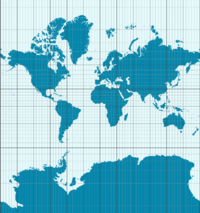Theorema Egregium

The Theorema Egregium is a fancy math term that describes something called Gaussian curvature. To understand this better, imagine you have a perfectly flat piece of paper. You can fold it or bend it, but it stays flat overall. Now imagine a sphere, like a beach ball. No matter how you try to flatten it, it always has a curved surface.
The Gaussian curvature is like a way to measure how much something is curved. If you draw a triangle on a flat piece of paper, the three angles will always add up to 180 degrees. But if you draw a triangle on a curved surface, the angles might add up to more or less than 180 degrees. The bigger the difference, the more curved the surface is.
The Theorema Egregium says that the Gaussian curvature of a surface is determined only by the way the surface is curved, not by how it is embedded in a larger space (like a sphere sitting on a table). This is important because it means you can study the curvature of a surface without worrying about its position in 3D space.
So, in simple terms, the Theorema Egregium helps us understand how much a surface is curved, no matter how it's shaped or positioned.
The Gaussian curvature is like a way to measure how much something is curved. If you draw a triangle on a flat piece of paper, the three angles will always add up to 180 degrees. But if you draw a triangle on a curved surface, the angles might add up to more or less than 180 degrees. The bigger the difference, the more curved the surface is.
The Theorema Egregium says that the Gaussian curvature of a surface is determined only by the way the surface is curved, not by how it is embedded in a larger space (like a sphere sitting on a table). This is important because it means you can study the curvature of a surface without worrying about its position in 3D space.
So, in simple terms, the Theorema Egregium helps us understand how much a surface is curved, no matter how it's shaped or positioned.
Related topics others have asked about:
